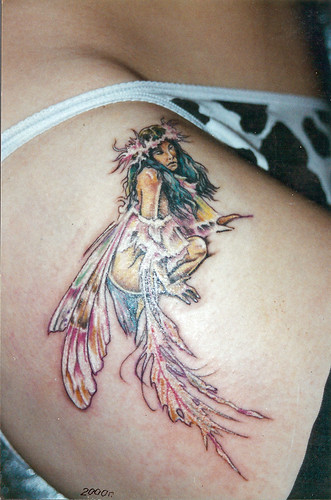

From the Times Online
January 3, 2009
"This was really different," explains Antoine Arnault, communications director of Louis Vuitton, when asked how Madonna came to front the company's new spring/summer campaign. "Usually, these things take much, much longer," he explains; a lengthy process of identifying the right person to embody the fashion and luxury-goods brand, the right photographer, the right look for the campaign, plus, of course, all the deal-making a project like this involves. This time, however, pretty much everything was agreed inside a week.
"On the Monday," Arnault recalls, "we had a meeting, and Marc Jacobs suggested Madonna. I thought, yes, great idea, but it will never happen. Then, in the meeting, Marc sent her a text saying, ‘Love, would you like to be the new Louis Vuitton woman?' Five minutes later, she'd replied. He showed me his phone, and she'd said, ‘Yes, I'd love to do it.'" What could be simpler ?

Clearly, when a big brand like Louis Vuitton chooses a new face for its campaign, it's not just a matter of affectionate text messages between Marc Jacobs and Madonna. Men like Louis Vuitton's CEO, Yves Carcelle, have to agree that it is a good idea, not a whim, as well as, of course, Carcelle's boss and Antoine Arnault's father, Bernard Arnault, head of the LVMH luxury-goods empire.
But as Antoine Arnault sees it, "Marc knows the brand probably better than anyone now," having been artistic director for a decade, during which time Louis Vuitton has expanded massively. Jacobs had seen Madonna in concert the week before, but it wasn't some "let's be crazy" decision, Arnault explains, citing how Jacobs had previously picked J-Lo as the face of Louis Vuitton in 2003. "That wasn't an obvious choice, perhaps, but it instantly put us on the top in the US in one campaign.

"Madonna is glamorous," Arnault continues. "She has a global image. She's the ultimate performer and businesswoman, and not someone who is just a famous singer. She has travelled; she has tried to change things." And if her personal life isn't perfect right now, "Well, that only makes her more human." Once the proposal had been made, and provisionally accepted, in both cases by text, "Then we had to agree on a figure, a concept, a photographer." Yet the whole process seems to have been plain sailing – an object lesson, if you like, in the degree of certainty that people at the top of the fashion industry tend to display about their creative choices.
The figure? Well, just how much Madonna is being paid for what is, in a sense, both one day's work and the product of many years at the top of her game is a moot point. Some have claimed it's $10 million (£6.6 million). But Arnault is careful to puncture that, saying, "The figure is really, really lower than that. In times like these, it would be totally irresponsible to pay anyone $10 million."

The concept? Madonna has been photographed in a nostalgic, Parisian bistro setting, perhaps at that "waiters whistling as the last bar closes" moment in the early hours. "Only it's in LA," Arnault quips, not Paris - "One of those French bistros in California where you really think you're in France" - and it's daytime and there are hundreds of paparazzi outside. Madonna smoulders quietly, all fishnets and high kicks, with a glamour that gives more than a nod to Dietrich, long an acknowledged influence. She's wearing Marc Jacobs' ready-to-wear clothes for Louis Vuitton, styled by Marie-Amélie Sauvé, with, of course, due prominence given to some lovely bags and shoes, those accessories that have long been such steady earners for the brand.
But there is a certain quietness to the images, a kind of gentleness, perhaps, which might also (along with that willingly professed prudence over Madonna's fee) be a sign of the extraordinary times we live in. Certainly, when I put it to Arnault that the crunch might be changing the aesthetic and that, in particular, a certain kind of flash advertising message now looks passé, even wrong somehow, he doesn't exactly demur. "Other people can try to rationalise every campaign, but there is certainly a feeling that emerges from designers, photographers, creatives of all kinds, which is maybe something they don't talk about, but which they can feel."
The photographer in question here is Steven Meisel, rather than Mert and Marcus, who have shot all of Louis Vuitton's campaigns since 2002, including those amazingly effective shots of J-Lo. "We were very happy with them," Arnault insists, but all good things come to an end – and, after all, it was Meisel who photographed the wilder, younger, more in-your-face Madonna who leapt off the pages of Sex, the book which caused such a storm back in 1992. So this campaign can be seen as something of a reunion, Meisel additionally having photographed Madonna for Vanity Fair late last year. Jacobs and Meisel are old friends, too, Arnault explains, "from the crazy years of the Eighties".

And once Antoine Arnault had assembled his dream team? "I think the three of them were in touch with each other on the phone almost every day," he says of the run-up to the shoot, “talking about ideas, sharing references, then talking about individual shots." On the big day itself, "About 50 people were on the set, which sounds like a lot, but it's all in the preparation, in the make-up and the set and so on. Once that was in place, Madonna would come out, get into position, and the shots went amazingly quickly, sometimes in about 15 minutes. It was a delight."





































